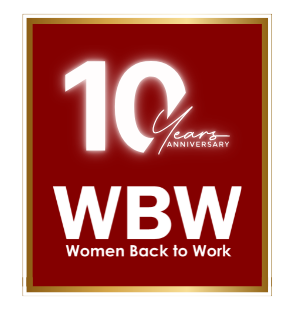Your Return-to-Work Resume: How to Showcase Skills That Matter
Build a Resume That Opens Doors—Even After a Career Break
If you’re reading this, you’re likely preparing for something big- returning to the workforce after a career break. Maybe you stepped away for caregiving, personal growth, or life circumstances that required your full attention. Whatever your path, you bring value. And your resume? It should reflect that.
This isn’t about “filling a gap.” It’s about showing up with your full story—skills, experience, and all the ways you’ve stayed sharp, capable, and ready to contribute again.
At Women Back to Work (WBW), we’ve supported hundreds of professionals on their reentry journey. With our upcoming Conference and returner-focused programming, including Power Hour Tuesdays and specialized Returnships, it’s the perfect time to make your resume work as hard as you do.
How to Build a Conference-Ready Resume (Even After a Career Break)
- Start with a Strong Summary Statement
Your summary is your headline—make it count. In 2–3 concise sentences, speak directly to who you are now and what you bring. Focus on strengths, experience, and readiness for your next role.
📌 Example:
“Project manager with 10+ years of experience leading cross-functional teams. Recently completed professional development courses in Agile and stakeholder communication. Eager to return to the workforce and contribute immediately in a fast-paced, collaborative environment.”
- Add a “Career Break” Section with Intention
Don’t hide the gap—own it. A dedicated section allows you to explain your time away in a professional, positive light.
📌 Example:
Career Break | 2020–2024
Focused on caregiving, professional development, and volunteer leadership. Completed online coursework in data analytics. Led school fundraising events and community programs requiring project planning, budgeting, and public speaking.
- Translate All Experience—Paid or Unpaid
If you managed a household, led a PTA committee, organized a fundraiser, or mentored peers—you developed valuable, transferable skills. Employers care less about where you gained your experience and more about what you can do with it.
Try to pull out skills like:
- Project Management
- Budgeting
- Stakeholder Communication
- Conflict Resolution
- Event Coordination
- Digital Tools (Google Workspace, CRM platforms, etc.)
- Use a Hybrid Resume Format
Returners benefit from a skills-based or hybrid resume format, which highlights what you can do before diving into where you’ve worked.
Resume Structure:
- Professional Summary
- Key Skills
- Career Highlights or Volunteer Work
- Career Break
- Education & Certifications
This structure helps you lead with your strengths, not your timeline.
- Tailor Your Resume for Every Role
Your resume isn’t one-size-fits-all. It’s a tool to show why you’re right for a specific job. Study job descriptions. Pull out key skills. Use industry-specific keywords to help your resume pass Applicant Tracking Systems (ATS).
✏️ Pro tip: Save different versions of your resume for different roles. Use WBW’s Power Hour sessions to get real-time feedback on how to do this effectively.
Need Extra Motivation?
Whether you’re exploring new opportunities or getting conference-ready, now’s the time to get your resume in shape.
Your resume is your re-entry tool. Make it honest, confident, and tailored to your goals. Include everything that shows your growth, not just your job titles. Let it tell the story of where you’ve been and where you’re headed.
Don’t just read about change—be part of it.
Come to the Women Back to Work Conference and meet returner-friendly employers, attend hands-on sessions, and take one step closer to your comeback
Register today and take the next step in your career journey.
📍 August 21, 2025 | Santa Clara, CA

